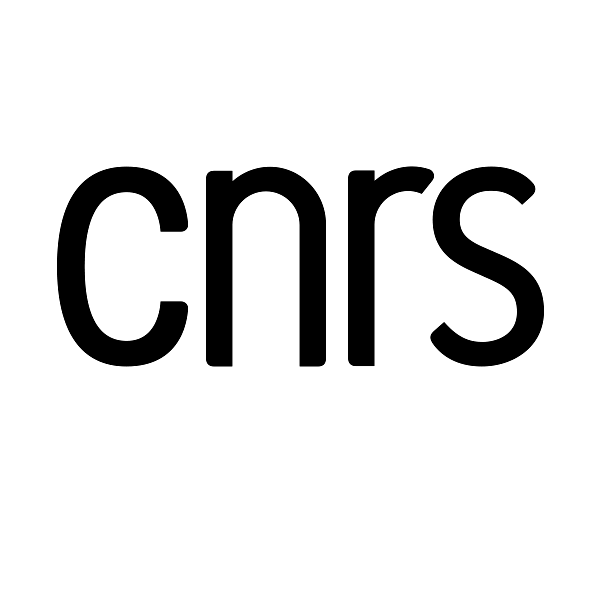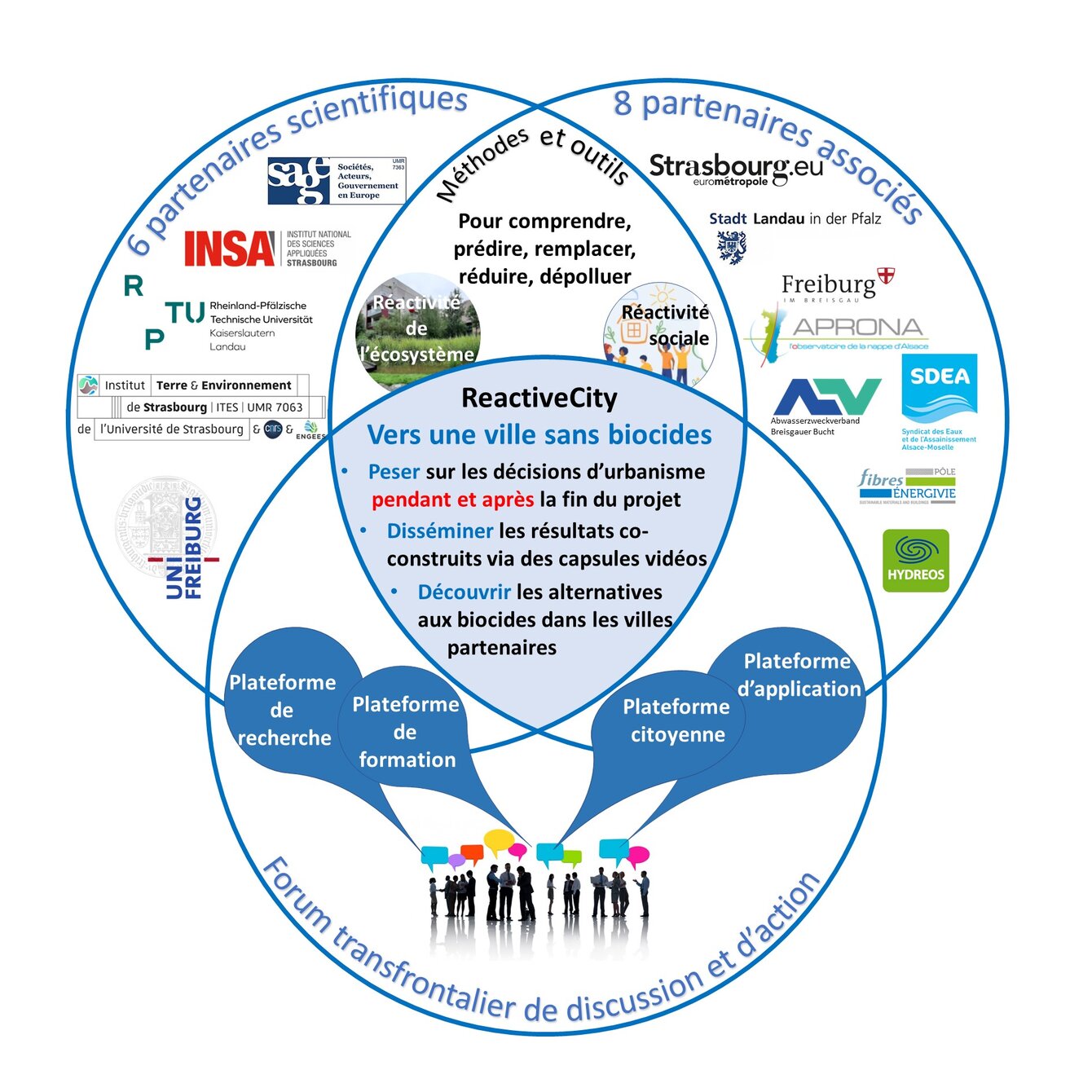Latest News
To keep up to date with the project, follow us on LinkedIn or send an e-mail to kogler@unistra.fr to sign up for our twice-yearly newsletter (click here to access the newsletter archive).
 &
&
 Funded under the Excellence Initiative program &
Funded under the Excellence Initiative program &

Vous êtes ici :
To keep up to date with the project, follow us on LinkedIn or send an e-mail to kogler@unistra.fr to sign up for our twice-yearly newsletter (click here to access the newsletter archive).

Click on the image below to download the project flyer
| Click on the images below to view them
|
graphics : www.wisson.fr
ReactiveCity is committed to urban sustainability in terms of human and environmental health. The cities of the Upper Rhine are gradually adopting adaptation plans to mitigate the impact of climate change on the operation of services and infrastructures in order to preserve a healthy environment. Based on a systemic vision of urban planning policy, these plans are part of the New European Bauhaus initiative, which, in the spirit of the European Green Deal, imagines a more sustainable and inclusive future for living spaces.
Quantitative water management plays an important part in these adaptation plans. The management of rainwater through the concept of the permeable city and the increased reuse of rainwater and treated wastewater is an ongoing paradigm shift. The Interreg V NAVEBGO project (2018-2022) has shown that sustainable urban water management must be accompanied by a reduction and then elimination at source of façade biocides. This observation can be extended to several families of emerging micropollutants with a potential ecotoxicological impact on the urban environment (façade biocides, domestic bactericides, animal and human antibiotics and perfluoroalkyl compounds).
Eliminating these urban biocides at the source or through specific treatment processes in wastewater treatment plants (for non-substitutable molecules) is a major challenge that cannot be dissociated from the quantitative management of urban water, in order to protect the health of citizens and the urban ecosystems of the cities of the Upper Rhine, but also to support the water needs of the increasing green spaces of urban areas.
Yet these biocides are still used extensively in façade paints, as well as in everyday household products. This reflects a limited awareness of the sources of emissions by the chain of actors, including consumers, architects, painters, manufacturers and water and urban planning departments. In addition, the efficiency of conventional wastewater treatment plants are limited for these urban biocides, particularly for antibiotics found in raw wastewater. This raises the question of the ecotoxicological impact of biocides, and in particular the generation of antibiotic resistance in urban rivers. Based on a diagnosis shared by the project's academic and non-academic partners, support for a transition towards a biocide-free city is still largely non-existent, in contrast to historical urban pollutants that are better known and taken into account in rainwater and wastewater treatment facilities. There are still gaps in the assessment of the risks associated with biocides on the scale of the Upper Rhine, tools for diagnosing the reactivity of these accumulation zones have yet to be developed and the understanding of the interplay of players and their ability to react has only been partially explored for façade biocides (NAVEBGO). As a result, the objective of reducing urban biocides is still poorly addressed in the plans and urban projections of Upper Rhine cities, delaying its implementation. There is therefore an urgent need to assess the urban response capacity at its social and biogeophysical interfaces in order to respond to the lack of knowledge about the sources, flows and ecotoxicological impact of urban biocides.
ReactiveCity aims to help the cities in the Upper Rhine to achieve zero biocides at source and at the end of their wastewater treatment plants for non-substitutable molecules.
In the short term, over the duration of the project, this involves producing regional references, developing tools and structuring the chain of actors involved to meet four challenges:
In the short term, therefore, ReactiveCity aims to understand, mobilise and enrich the (i) social components in order to raise awareness among the chain of players of the challenges and issues surrounding urban biocides and to stimulate active and demonstrative research into alternatives and the means of enhancing and disseminating them, and (ii) ecosystemic components, to identify and predict the conditions of degradation, accumulation and mobilisation of biocides in the various urban compartments, soils, river sediments and groundwater, as well as the associated ecotoxicological impact (Figure 2). This will make it possible to identify options for the short-term reduction and medium-term elimination of the most harmful urban biocides, as well as solutions for limiting the dispersion into the urban environment of biocides for which there are currently limited alternatives, such as antibiotics.
ReactiveCity is based on a number of approaches: sociological (i.e., characterisation of the decision-making chains of the players involved in the use of these biocides, their level of awareness of their impact and the obstacles to the use of alternatives), architectural (i.e., promotion of biocide-free housing, in particular through the use of facade coatings based on bio/geo-sourced materials free from biocides), hydro-biogeochemical (life history, transport routes, accumulation, degradation, ecotoxicology of biocides), and mapping the risk of accumulation and remobilisation and the reactive zones that enable these biocides to be degraded, by extending the current approaches from the neighbourhood to the city, depending on the type of system (combined or separate) and the type of water management (reuse of grey water, rainwater).
To catalyse the adoption and implementation of sustainable solutions in urban planning, ReactiveCity initiates a cross-border forum for discussion and actions based on four Franco-German platforms (citizen, application, training and scientific) bringing together all the players involved for changing the way we look at and use biocides in the medium term (Figure 2).
ReactiveCity is designed to produce, share and perpetuate operational and transferable results for each urban area of the Upper Rhine wishing to integrate the reduction of biocides into its adaptation plan to mitigate the impact of climate change.
To facilitate diagnosis and support decision-making processes in urban areas, ReactiveCity will produce:

ReactiveCity will be directly involved in the PACTE initiative for ‘Thinking, planning and building in ecological transition’ (« Penser, aménager et construire en transition écologique ») in urban areas, developed as part of the Strasbourg Eurometropolis. In particular, PACTE will make it possible to explain the issues at stake to citizens and elected representatives, and to influence urban planning decisions during and after the completion of the project. The setting up of a cross-border PACTE initiative will be studied.
The results of ReactiveCity will be summarised in the form of learning capsules (fact sheets and short videos) in French and German for five families of stakeholders: (i) the residents and associations of the cities, (ii) the departments of Upper Rhine towns responsible for urban planning and water and environmental management, (iii) construction and urban planning professionals, (iv) students and engineering students training in architecture and water and environmental management, and (v) scientists in the field, (iii) construction and urban planning professionals, (iv) students and engineering students on courses in architecture and water and environmental management, and (v) scientists in the field, i.e. 20 educational capsules of 5 to 10 minutes each. These capsules will be disseminated via the ReactiveCity project website and also via the communication networks listed in section 9.4. Each of the four platforms (citizen, application, teacher-trainer and scientific) will propose a dissemination plan and the most suitable media (social networks, newsletters, etc.) for promoting and enhancing these capsules.
In collaboration with the communications departments of the three test cities, a signposted walking trail will enable citizens to consult, via a QRcode display, ‘general public’ educational capsules at strategic locations illustrating (i) the conditions at risk of remobilisation of historical biocides, but also (ii) the environments favouring the dissipation and degradation of these biocides and (iii) the architectural and stormwater management initiatives illustrating what a permeable city without biocides, with low ecotoxicological impact, can look like.
The Strasbourg route will be based on the Môle Citadelle district, which has been selected as a pilot demonstration site for the ReactiveCity project. The signposting and promotion of these routes will be carried out by the communications departments of the cities of Freiburg and Landau and the Strasbourg Eurometropolis.
The duration of the proposed project is four years (Sept. 2023 - Aug. 2027) in order to be able to produce, share and disseminate all the results and productions during the project itself, with the data acquisition and results production phase requiring three years.
ReactiveCity addresses four audiences to catalyse the ownership and implementation of sustainable solutions in urban planning. In a cross-border forum for discussion and actions, each target audience will co-construct sustainable solutions in one of four platforms (Figure 2):
An inter-platform steering committee comprising the ReactiveCity partners will be responsible for the forum's governance and will encourage cross-platform work to cross-fertilise viewpoints.
To address the issues and challenges of ReactiveCity, six research teams from the universities of Strasbourg, Landau and Freiburg, the CNRS and two engineering schools (ENGEES and INSA) with complementary areas of expertise (social sciences and humanities, architecture, hydrology, chemistry of pollutants and ecotoxicology) are joining forces with three Upper Rhine cities (Strasbourg, Landau and Freiburg), two wastewater management structures (SDEA and Abwasserzweckverband Breisgauer Bucht) and two competence clusters dedicated to water (Hydreos/Aquanova) and sustainable construction (build&connect from the Fibre EnergiVie cluster) (Figure 2).
Research teams:
Associated partners :